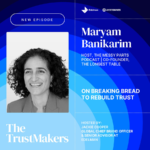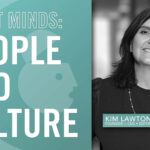From public health to CPG, marketers should be finding solutions that go beyond altering individual behavior
By Kelleen Peckham, Director of Brand Strategy, and Adam Flynn, Social Norms Strategist, of Duncan Channon
There are many articles about using the latest marketing techniques to drive revenue for non-profit organizations, but it is rare for brands to learn marketing tactics from non-profits themselves. Today we’re talking about what marketers can learn from leveraging a strategy based on social norms, a cornerstone of effective public health work.
Different goals mean a different lens on behavior
Let’s start by taking a look at for-profit marketing goals. They center around individual purchases. In other words, the goals are set in terms of individual decisions. While easy to measure and track progress, they overlook a vast web of influence on how those decisions get made.
Public health goals are set up differently, thanks to the development of large scale social measurement that began in the late 1800s. These goals try to change things for an entire population of people (e.g. “increase the COVID-19 vaccination rate in Californiat”).
Focusing on the individual behavior with for-profit goals makes sense initially, but here’s the thing: individuals don’t make decisions in isolation. They take cues from what like-minded people are doing, and from what’s considered the standard in their social circles. We can attribute this to the existence of social norms.
What are social norms?
As UNICEF puts it, “social norms are the perceived informal, mostly unwritten, rules that define acceptable and appropriate actions within a given group or community.” (Source)
That might be abstract, but you can think of it this way: humanity is evolutionarily driven to seek belonging in groups. Fifty thousand years ago, exile from a group was equivalent to death. We have sophisticated mental hardware to assess groups and our place(s) within them.
Those groups have both actual and imagined standards for behavior, which shape assumptions and (ultimately actions) in the individual. In our experience, cost-benefit analysis takes a distant second to “What should someone like me do in a situation like this?”
Applying this to your work
The greatest opportunity for marketers lies in social norms that have cultural specificity, rather than the hugely universal ones. To maximize impact, brands should explore what social norms are already connected to the product they’re looking to market.
“Finding the tension” in a brief often points to a mismatch between assumed cultural expectations and individual attitude or experience. For example, a recent IKEA campaign found tension between the social expectation that our homes should always look nice and tidy and the day-to-day realities of messy living. It went so far as to identify its own role in upholding this unrealistic norm, and offered support for consumers’ actual experiences.
Given the pressure on CPG companies from the FDA taking on ultra-processed foods and additives, or the tension between a preference for “fresh foods” vs the economic realities facing many households, we may be entering a new era of social norms-focused work in the CPG sector.
Social norms strategy also acts as a keystone in influencer marketing. We can’t just look for reach or aesthetic — we have to look for people who embody the evolving norms of their communities. When the right voices model a behavior or belief in a way that feels authentic and aspirational, it doesn’t just generate awareness — it signals what’s becoming normal among “people like me.”
Social norms are powerful, so we always consider the question of, “will our efforts ultimately benefit the people we’re trying to influence?” This sort of social engineering can be dangerous in the wrong hands. Strategists should advocate for an audience from a place of empathy.
When leveraged ethically and insightfully, social norms tap into the deep emotional wellsprings of behavioral change —creating room for people to feel more seen and aligned with their values. That’s what makes them so powerful in brand work: they reach beyond the individual, latching on to social forces that ultimately drive business results more effectively.











